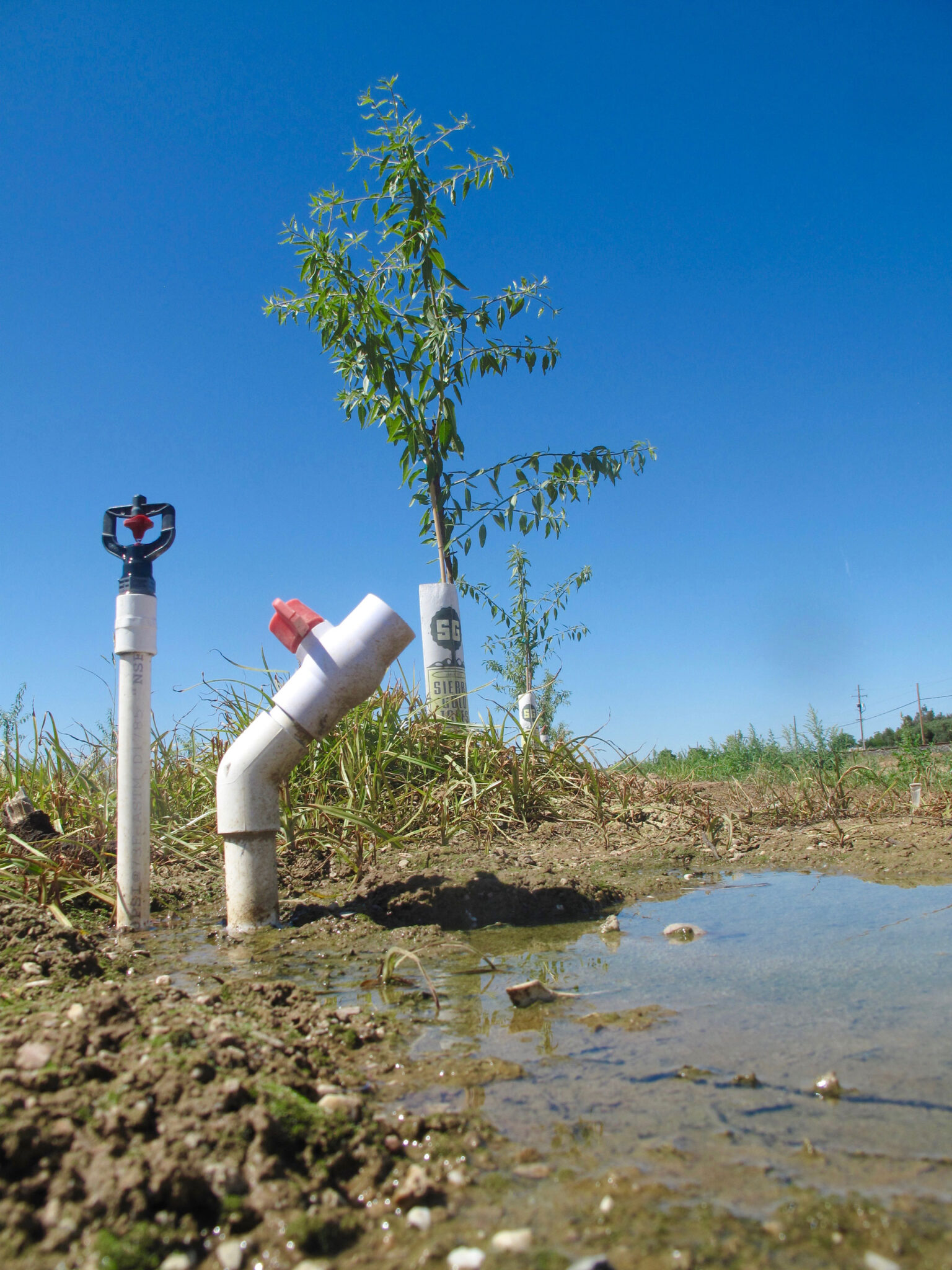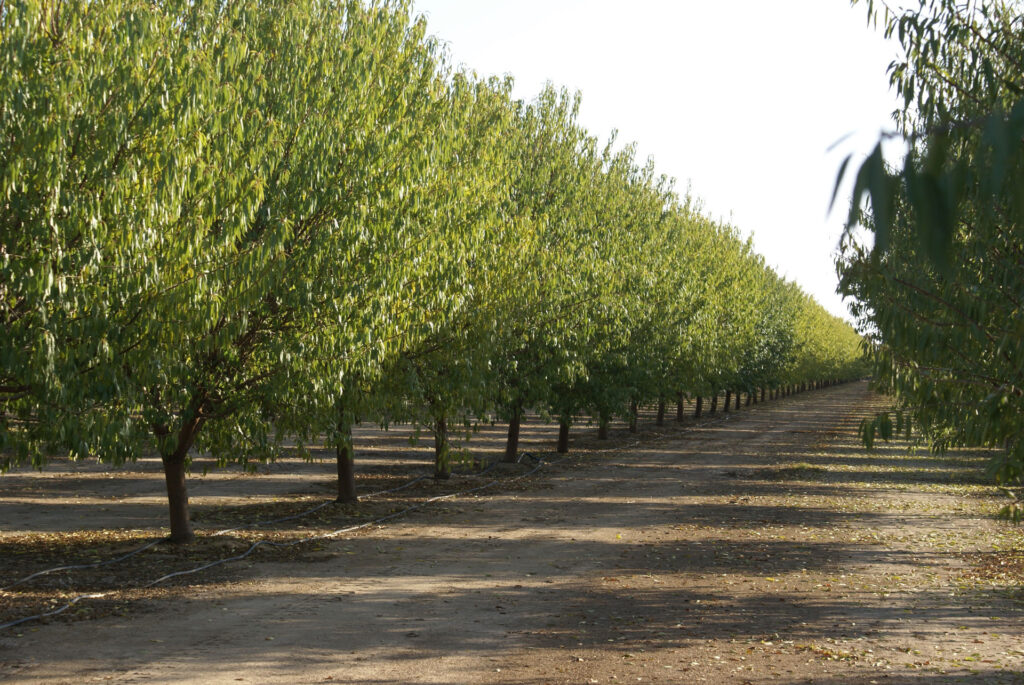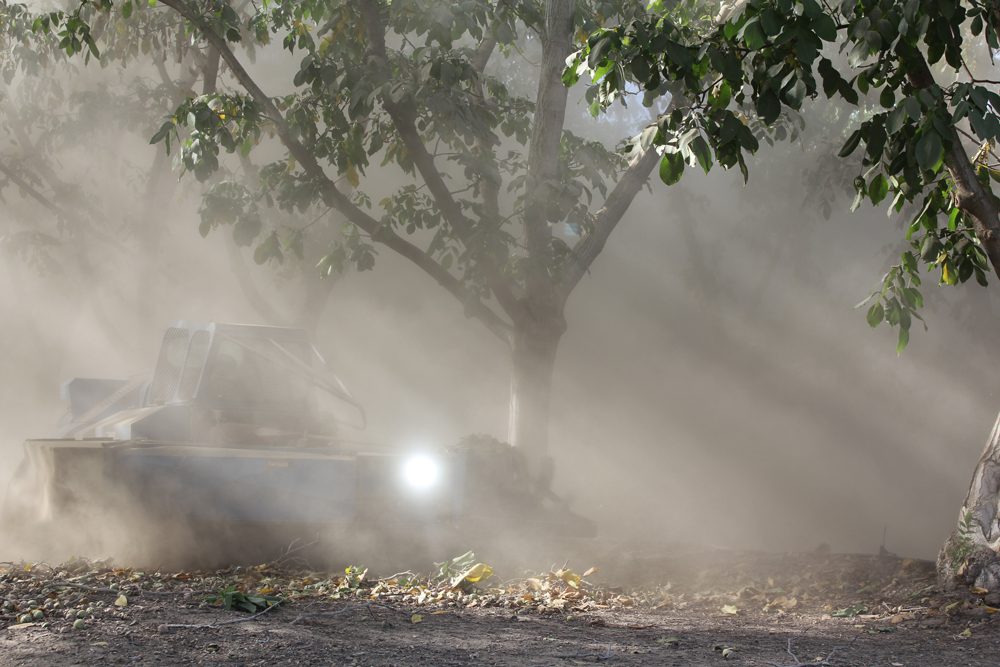
There is one thing nut growers know for certain, and that is the uncertainty of Mother Nature. And uncertainty is what lays on the horizon as the west continues to navigate through a historic drought that has prompted federal and state cutbacks in regulated water supplies.
In early August, the Water Resource Control Board adopted an emergency resolution allowing regulators to halt diversions from two of California’s largest river systems: the Sacramento River and the San Joaquin River watersheds. The order could apply to around 86% of land owners who have legal rights to divert water from these two systems, with a possibility of the remaining 14% being impacted if conditions get worse.
While this governmental action has potentially devastating impacts on the central and southern regions of the state, growers in Northern California are a bit better off as the majority of nut growers in the Upper Sacramento Valley receive their irrigation from privately-owned agriculture wells, not districts or agencies.
Preparing for a Dry Future
According to the Water Resource Control Board, the curtailment order is a necessity to protect the state’s water supply, especially if the drought continues into this next wet season.
The possibility of another dry winter and spring all too real, said Franz Niederholzer, UCCE farm advisor in Colusa, Sutter and Yuba counties.
The National Weather Service Climate Prediction Center (cpc.ncep.noaa.gov/) is forecasting a dry winter in much of California. Specifically, it says the El Niño-Southern Oscillation is predicted to be neutral through early fall, with La Niña potentially emerging during late fall and lasting through the 2021-22 winter. That forecast means a winter/spring of less than normal rainfall; in other words, continuing drought conditions.
What if the forecast rings true and the winter and spring of 2021-22 doles out insufficient amounts of rain to rescue the arid landscape, fill reservoirs and renew groundwater levels?
What is a grower to do? How do you plan for such an unknown future while still fulfilling worldwide demand for produce and keeping the financial coffers steady?
Los Molinos walnut grower Bruce Lindauer of Lindauer Farms says he completely understands this quandary, especially after his many years in the industry.

“Growers wake up every day having to make such calls in the face of uncertainty,” he said. “Dry north winds, drought, too much rain, scorching heat, pests, disease, it is all a part of the daily path growers have to navigate.”
The old saying, “plan for the worst and hope for the best,” is probably the advice most growers should be applying as they move into this uncharted territory, Niederholzer suggested.
“Looking to the future and making decisions based on two possible outcomes, sufficient or insufficient water supply, is important,” he added. “The hard decision of evaluating your orchards and deciding what to keep and what to walk away from has to be considered. It sounds extreme, but you have to have that conversation and assessment walk-through before the decision is right in front of you so you aren’t scrambling.”
He suggests growers look to make those calls by Thanksgiving or at the latest the first of December as bee contracts are coming up, and if the decision is made to walk away from 25% of a grower’s acreage, bee contracts will need to be adjusted in line with that decision.
“If it rains sufficiently, that’s great, but growers still need to consider what to do if it doesn’t,” Niederholzer adds.
Ag Wells Aren’t Surefire
Farm Manager D.C. Felciano of JJB Farms LP said the company had to plan ahead by selling off hundreds of acres in almonds in the Delta region due to water cutbacks.
“Basically, it comes to this: no rain, no water, no produce and it’s a loss all around,” he said. “For our orchards in the Northstate, we are on agriculture wells and should be okay even if we have another dry winter and spring, but down south, it’s a whole different story.”
For those on ag wells, the questions still needs to be asked: Where is the value in your farm going forward and where do you need to limit your losses and water use?
Lindauer said as he plans for the future, his road map for a dry winter is to make sure his trees go dormant with plenty of moisture in the root zone area.
“And then I will watch the weather during the winter months and see what happens,” he added. “I want to make sure the roots wake up, not saturated, but with enough moisture in the spring. I would move from point A to point B and plan accordingly. That is really the best I can do.”
Niederholzer said if the state doesn’t get enough rain and snowpack in the mountains this winter and early spring, even growers on wells will need to be cautious.
“As the groundwater levels drop, even if adequate water is being pumped from ag wells, the quality of that water might need to be considered,” he said.
He explained that the salinity, chloride, selenium and boron levels could go way up and cause additional problems for nut trees.
“And unfortunately, the best way to leach those toxic levels is to wash them out with good-quality water,” Niederholzer said. “This buildup of minerals can make it difficult for the plant to function and thrive.”
Rationing Resources
With the possibility of limited resources, Niederholzer suggests growers consider where best to use those resources, specifically water.
“You have to look at which orchard blocks are bringing the best return, and then you have to make a decision on how to treat the remaining property. There are so many things to consider on the remaining orchards and their maintenance, such as age, variety, rootstock and site location,” he said. “If you’re looking at a young block, the possibility for bounce-back is likely; however, if you are looking at older orchards, the probability is that cutting back on irrigation will most likely shorten the trees’ lifespan and quality of future crops, and it might not be worth farming.”
For instance, if the drought continues and a grower has an old, hard-shell variety block on older Marianna rootstock, that might be a block to retain as the rootstock deals well with high-salinity water in comparison to a block on another, less tolerant rootstock.
“It isn’t a blanket statement on age as much as it is the productivity and long-term quality of the orchard, rootstock and variety,” Niederholzer said.
In addition, planning for the future under these circumstance isn’t just a one-year outcome, but rather a two-year outlook, at least. The decisions on water supply and use made today directly impacts the flower, set and crop two years out.
Lindauer says it is constantly a “what if this” or “what if that” in planning ahead.
“But even for those of us on ag wells, it isn’t a sure thing,” he said. “You have to consider that even ag wells can face inadequate water supplies. And then you have to consider your electrical or power source for those wells; is it adequate or stable and even affordable? There are a lot of aspects to deal with under these conditions.”
As if the drought isn’t causing growers enough of a headache, Lindauer laments the Pacific Gas and Electric Company’s (PG&E) new rate program that doesn’t allow irrigation well use between 5 p.m. to 8 p.m.
“How do you deal with this, how do you or your employees go out after 8 p.m. to check your lines and prepare to turn the irrigation back on? It’s dark. This is just crazy,” he said. “The public wants us, the growers, to be as sufficient as possible with every drop of water during this drought, but how can we do that when PG&E is making things even more difficult for us? How do you plan for the future, for continued drought conditions, around something like this?”
Niederholzer said this next year has the possibility of creating conditions never seen before in the Sacramento Valley for nut growers.
“We have to ask ourselves, ‘What is the future going to look like if we continue to receive inadequate amounts of rain?’ We may have to make extremely hard decisions under conditions never before seen in the state,” he said. “And those decisions aren’t going to affect only nut growers and other produce growers, but the ripple effects will be wide and deep, all the way down to the consumer and everywhere in between.”










